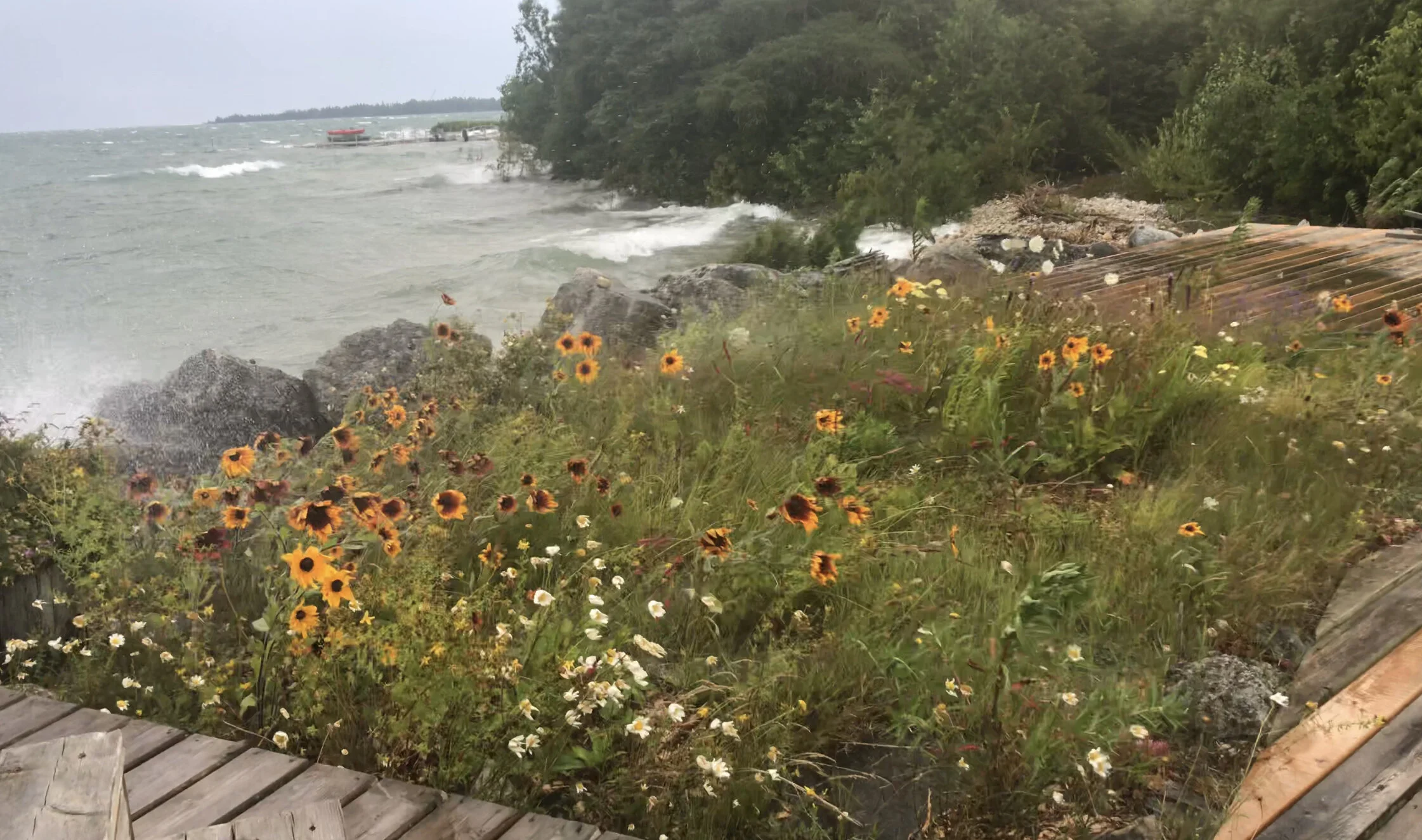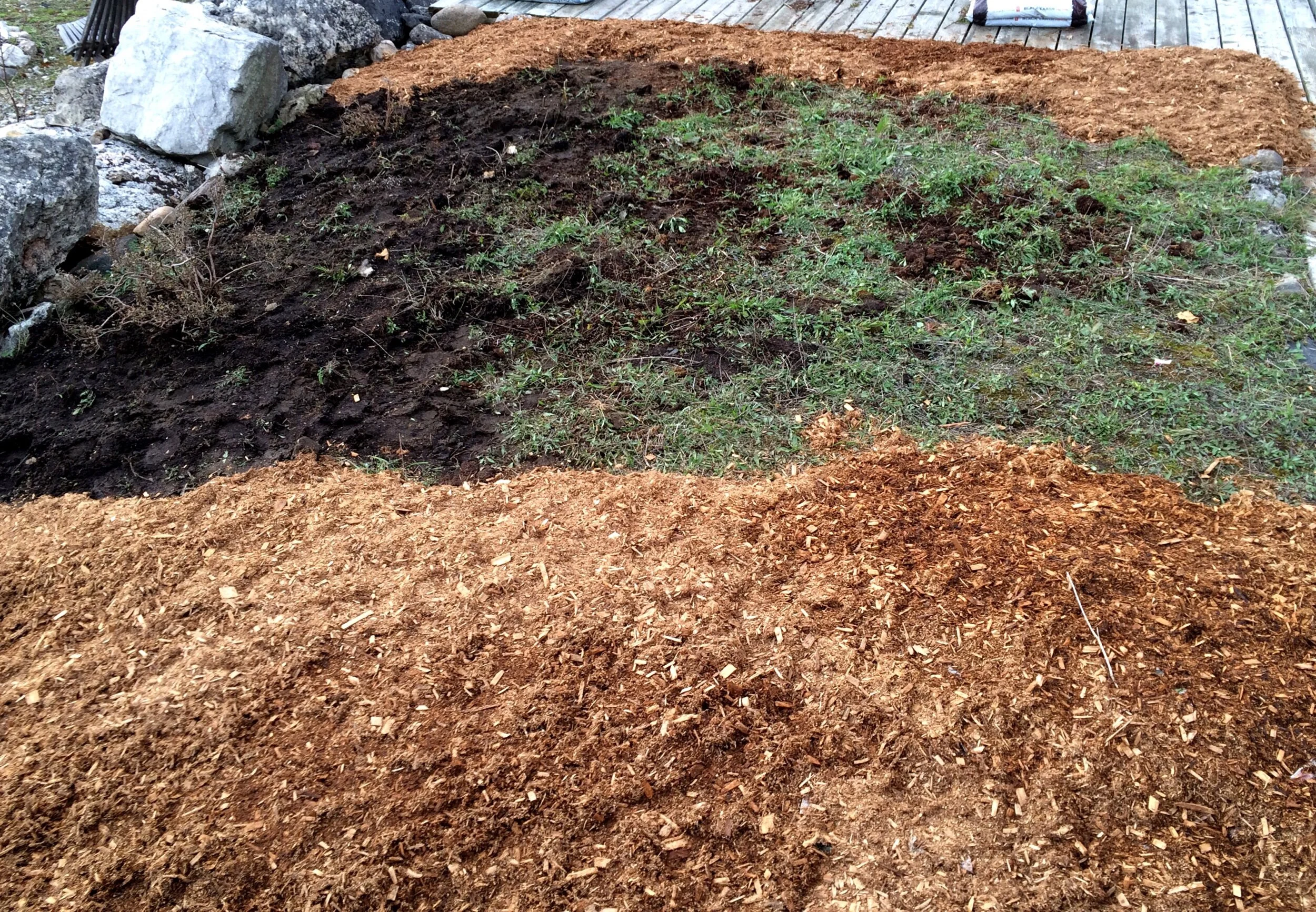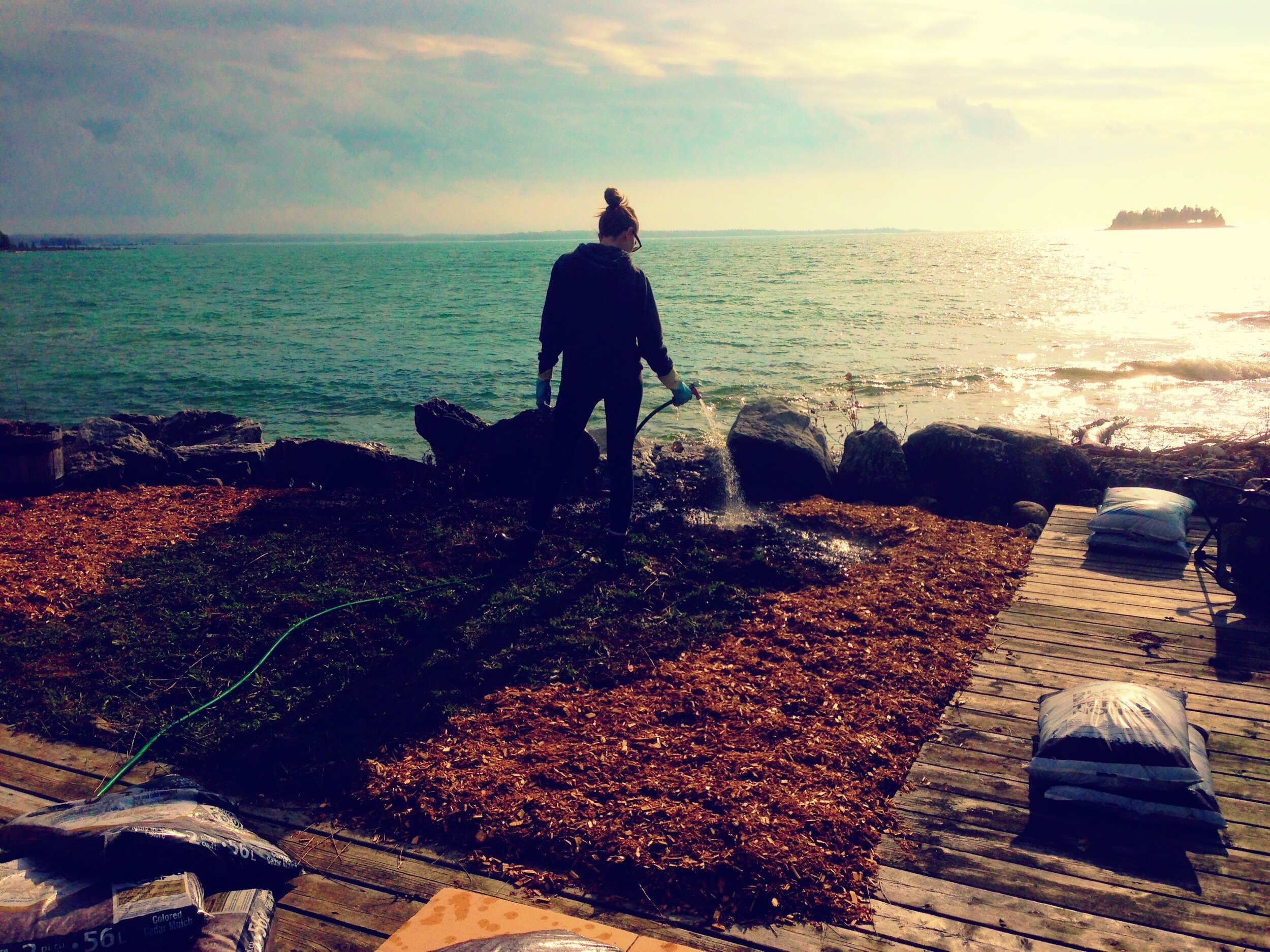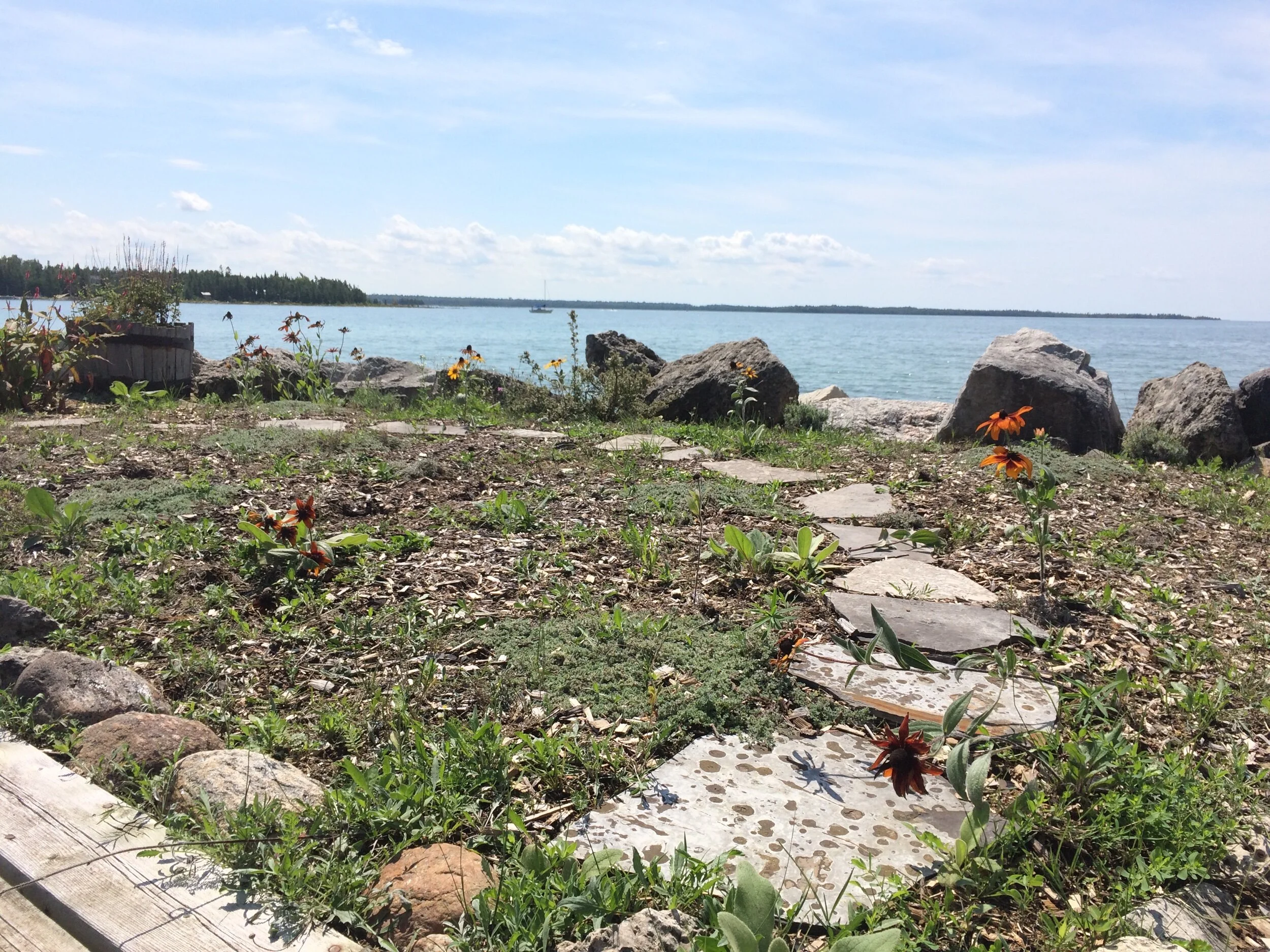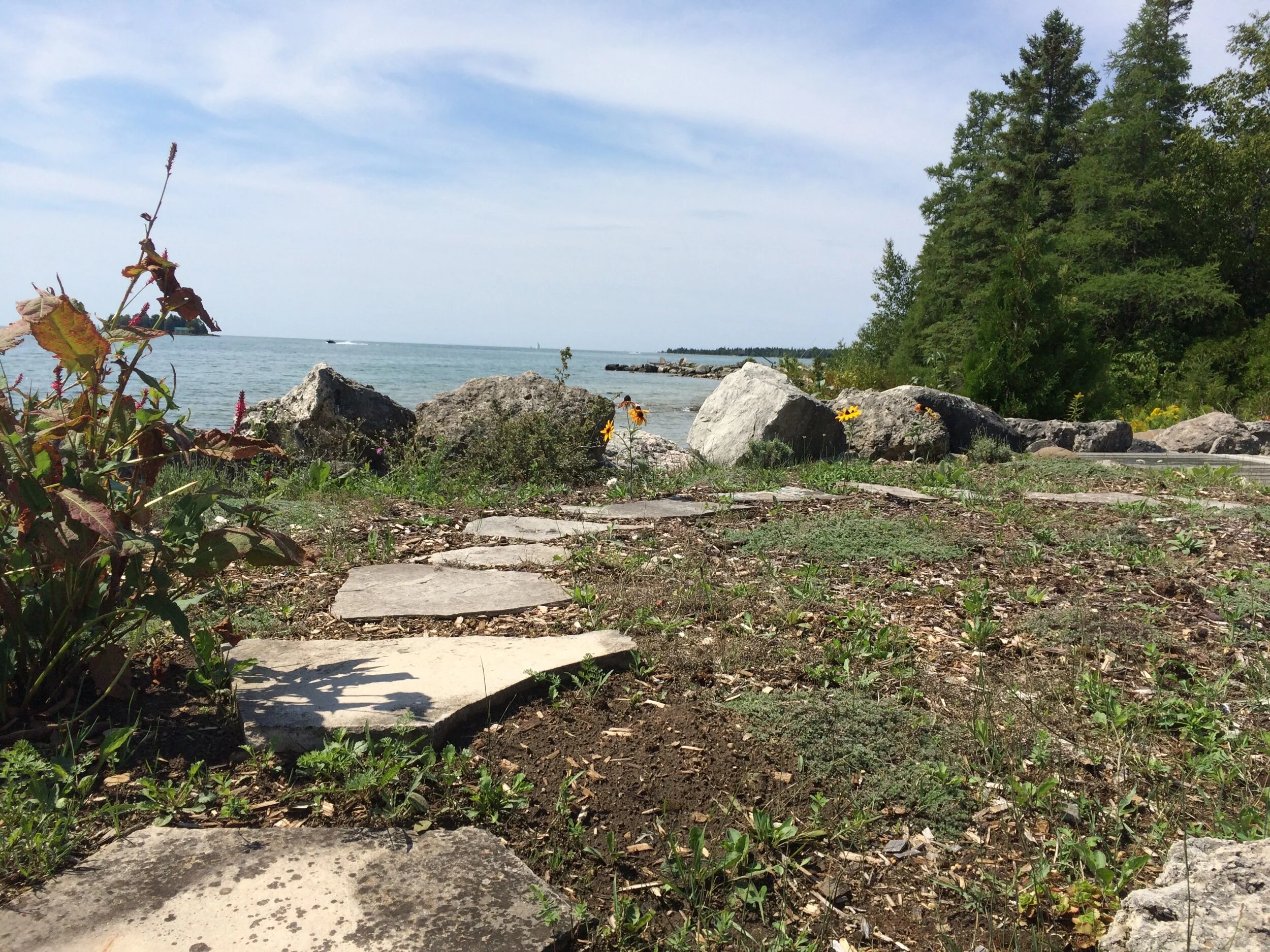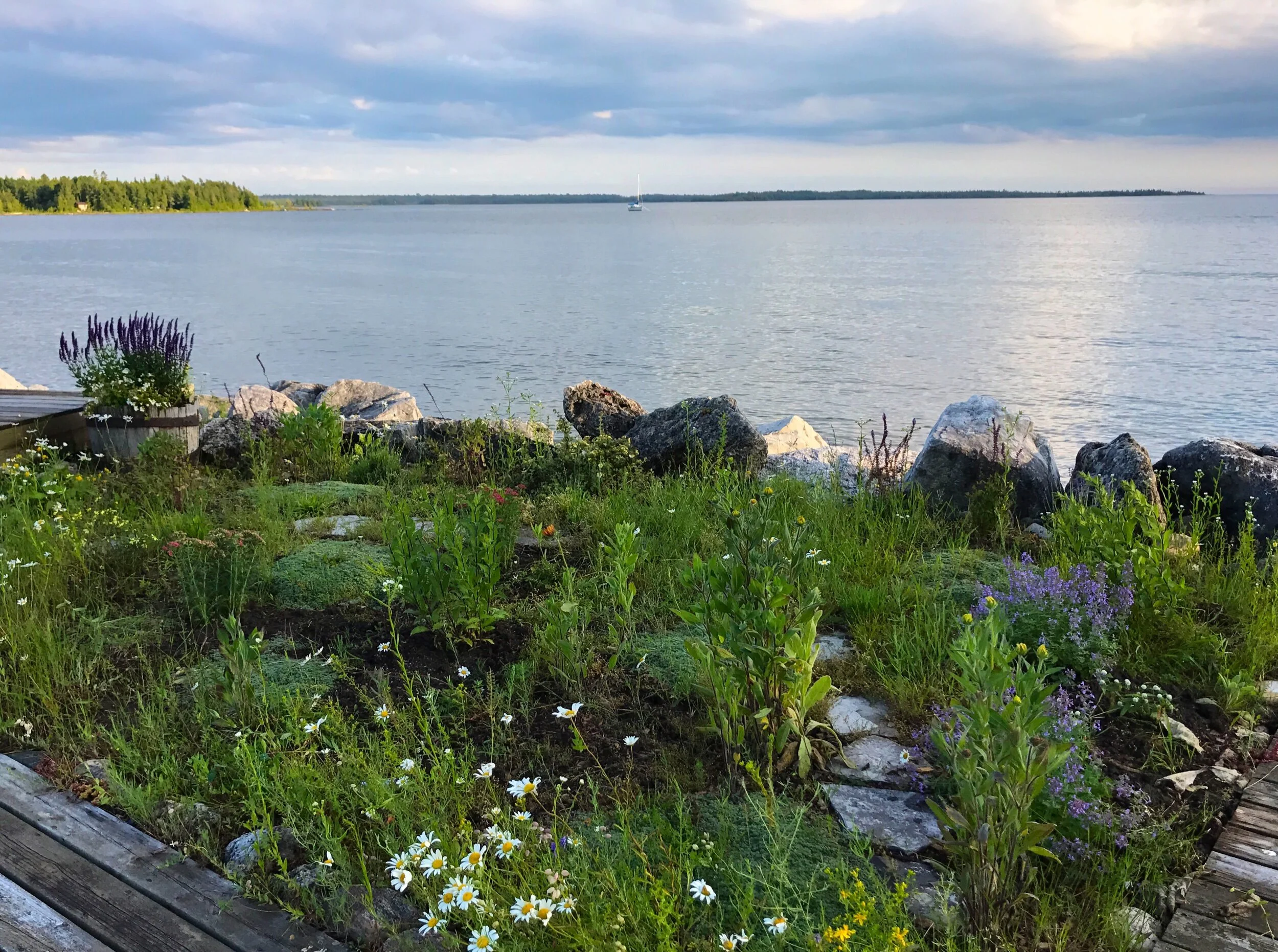Nestled beside Lake Huron along the Bruce Peninsula, this garden is in an unforgivable location. Storms cause waves to crash and flood the garden as seen above. The summer sun beats down relentlessly causing heavy drought. Winter sees -40C temperatures and full ice coverage. Just the regular winds alone that it endures being on a Great Lake brings the drama.
This has been a labor of love and seeing the dock garden transform from what it started as has been foundational to my approach at gardening on the island. Here you’ll read about it’s progress and how it has developed over the years.
The state I found this garden in left 10 years of knapweed growth to take over aggressively. This garden is built over rock and mounded up between 2 feet to 5 inches of varying depth throughout. It’s actually a luxury having this kind of depth on the island because most areas are predominantly bedrock. I used a process called sheet mulching to smother the knapweed and established health back to the soil. Here you can see the process in autumn of the first year. After string trimming the area, cardboard boxes were laid down, followed by triple mix and mulch.
Tilling the garden the following spring had it’s advantages and disadvantages. It helped work the organic matter in to the soil adding nutrients back it but it also awoke dormant seeds both good and bad. Knapweed seed stays dormant in soil for years ready to be re-ignited. While the sheet mulching and tilling gave me beautiful soil, I pulled massive amounts knapweed in years the first couple of years from this garden and the surrounding area since it had established all over the surrounding rocky terrain..
No significant planting occurred the first year and I focused on management by pulling by adding thyme to help suppress knotweed, pulling undesireable plants and allowing seed to establish selectively. A lot of my observation of new seed growth had me digging through native plant websites and books, where I learned a lot about native plants and their growth pattern from seed. I also recognized the value of non native varieties that were fit to the tough task of survival here and was pleasantly surprised to see this non-native rudbeckia pop which had dormant seed in the soil.
Year three was so exciting. Seen here at the beginning of July, the seeds that were establishing flowered and the prior year’s fall planting established well. I was still pulling undesirable plants selectively but much less frequently and bare gaps in the soil were filling in nicely with native grasses that found their way in. You can see here oxe eye daisy and St. John’s wort intermingled with rudbeckias, catmint and yarrow.
The following years brought on trial and error, where I planted varieties, both native and non native, to varying success. I started to thin the thyme out to allow less space between plants and gradually the garden filled out more. Year four had me focusing on drought tolerant plants. Plants needing regular supplemental irrigation were not going to survive in these harsh conditions.
This small plot has turned in to my test garden. With the tough conditions it has to endure, it gives me insight in to the strength of plants that are added.

